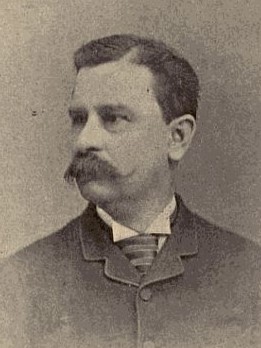
John Kerr Tiffany
February 9, 1842 – March 3, 1897
Saint Louis, Missouri
Tiffany was America’s most prominent philatelist of the 19th century. He began collecting as a student in France in the late 1850s, continuing for the rest of his life. In the 1860s he decided to begin collecting “every printed matter connected to the hobby of philately,” and by the 1870s he had built an incomparable philatelic library.
In 1874 Tiffany published The Philatelical Library: A Catalogue of Stamp Publications, a listing of the known philatelic works, nearly all of which were in his library. He wrote other articles on, and catalogs of, his philatelic library during the next two decades. In 1889 he wrote Part 1 of The Stamp Collector’s Library Companion, and in 1890, an Addenda.
At his death, Tiffany’s library was the largest and most complete ever formed. James L. Lindsay, the Earl of Crawford, acquired it intact. On his death, Lindsay’s library went to the British Museum (now located in the Philatelic Section of the British Library).

When the American Philatelic Association (now the APS) was organized in 1886, Tiffany was elected president and re-elected for the next ten years until he decided not to run again. He was an ardent collector, building important collections of U.S., British North America and Afghanistan, among others. In 1894 he wrote a seminal monograph, “A St. Louis Symposium,” setting out the correct plating of the St. Louis Postmaster Provisionals (the “Bears”) based on the limited material available. His analysis was verified by subsequent finds of the Bear stamps.
Tiffany wrote the first comprehensive book on the stamps of the United States. It was first published in French by the Belgian dealer, J.-B. Moens: Les Timbres des Etats-Unis d’Amerique (in three parts, 1883). He subsequently revised and expanded it, and it was published in 1887 as History of the Postage Stamps of the United States of America.
In an 1890 poll taken by The Philatelist (NY) (Vol. 2, No. 4, June 16, 1890), Tiffany was named the second “most prominent philatelist” – second only to the “Great and only Scott” (J.W. Scott). In 1921, when the Roll of Distinguished Philatelists was begun, Tiffany was named as one of the “Fathers of Philately.”

